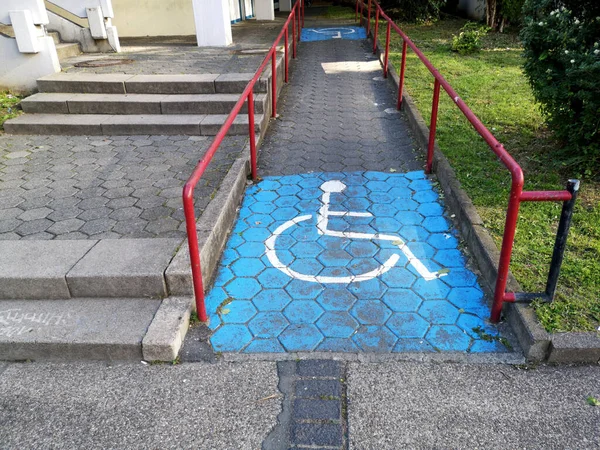ADA ramp requirements And Ramp Slope Calculator Guide
ADA ramp requirements define the minimum standards ramps must meet they are considered to be accessible. These rules apply to the construction of new buildings as well as renovations of existing structures. The most important specifications for ADA ramps are:
Check that your ramp for wheelchairs is compliant with ADA requirements.
1. Ramp Slope
The highest slope that an ADA ramp could have is 1:12, which means that for each inch of rise in the threshold the ramp has to be at minimum twelve inches (one foot) long.
If you’re not sure of how to calculate you can utilize ramp slope calculator. ramp slope calculator.
The length of the ramp is directly proportional to the distance between the ground as well as the top of the door in addition to the slope required. For instance, the door in your home is 40 inches above surface. To ensure that the ramp does not exceed 1:12. the ramp has to be at least 40 feet long.
2. Ramp Width
ADA ramps should be at minimum 36 inches wide, that allows wheelchair users as well as other devices for mobility to securely traverse the ramp.
3. Platform Landings
ADA ramp specifications include landings at the top and the bottom of the ramp. The landings must be at least the same width as the ramp, and minimum 60 inches in length. Landings allow handicapped people to sit and even turn around in the event of need.
The number of resting Platform Landings
As per the ADA ramp regulations In accordance with the ADA ramp requirements, the maximum rise of one ramp will be 30 inches. This means that the max length for a ramp run is 30 feet. Therefore, one platform landing is required for every thirty feet ramp. Why? Because landings are resting places and resting areas, the Americans with Disabilities Act determined that after 30 feet of continuous running an area for rest is necessary.
-
Size of Landing
- Width: The landing should be at least the width of the ramp that is widest and is connected to the landing.
- Length: the length of the landing should be at least 60 inches with no obstruction.
- If the ramp is able to change direction, the ramp is able to change direction and you want to land, you must do so with a clear area which is not less than 60 inches wide by 60 inches.
- Doors: If doors lead to a landing area, you must comply with this section for ADA ramp landing specifications.
4. Guardrails and Handrails
ADA ramps must be equipped with the handrails at both ends and are 34 to 38 inches higher than the ramp’s surface. Handrails can help those with disabilities keep their balance and maintain their stability when on the ramp.
Railing extension
If a railing exists on the sides of an ramp, it must be at least twelve inches further than the bottom and top of the ramp. This will help people with disabilities remain in their place while on the ramp.
Clearance between handrails
The minimum distance between ramp and handrails of the ramp is 36 inches, which means that wheelchairs can slide between the handrails easily. See the complete list of ADA ramp handrail specifications including length, perimeter, the location above the walkway and much more.
Space between balusters
Balusters are necessary to be installed on ADA ramps to prevent falling. Balusters should not be placed more than 4 inches from each other, so that a child can’t slide through the gap.
Guardrail
Guardrails, that is distinct from the handrail should have a minimum distance of 42 inches away from the walkway surface in order to stop individuals from falling over the ramp’s edge.
5. Surface
Surfaces of an ADA ramp has to be slip-resistant and smooth. This is crucial to ensure the safety of those who have disabilities, as well for those who might use strollers to push or other mobility aids.
6. Edge protection
Edge protection is essential around areas of edges on an ADA ramp and landing. There are two kinds of edge protection you can choose from:
- Extensive ground surfaces: The ramp and landing surface is required to extend at least 12 inches beyond the edge that is inside the handrail.
- Kickplate or barrier: there cannot be an area greater than 4 inches in between your ramp or the kickplate and the lower part of the railing.
It is crucial to remember this is the minimal specifications of ADA ramps. In certain cases it is possible that additional features are needed to make the ramp completely accessible. For instance it is possible for a ramp to have a higher entry point at the top, if there isn’t enough room for someone in wheelchair to turn.
In a nutshell, ADA ramp requirements are designed to ensure that persons who are disabled have equal access to facilities and buildings. If you comply with these rules the building owners and designers can develop ramps that are safe and accessible to all.
Ramp Slope Calculator
If you or someone you know has the scooter, walker or wheelchair, a ramp can make the process of moving into the and out of house considerably simpler. National Ramp is a company that National Ramp, we strive to assist you in achieving Freedom Now by providing the highest-quality and most secure residential ramps available. We provide a variety of designs of wheelchair ramps that can help you or a loved one attain the independence and flexibility they require. Our ramps are all our designs are compliant with the requirements of the Americans with Disabilities Act (ADA) Standard Ramps designs, including:
- Aluminum ramps
- Steel ramps
- Wooden ramps
If you’re in search of an option to improve mobility for yourself or your beloved one you love, National Ramp has you covered. Our ramp consultants and experienced installers can determine the most slope for your specific needs. This will ensure that your ramp has an appropriate length and slope that meets ADA safety standards. We utilize a formula for handicap ramp slope to provide you with customized ramps that are suited to your needs and needs. Utilizing the formula will help us ensure that your wheelchair ramp slope is of the right height as well as the slope and length.
What Can A Slope Calculator do?
A handicap ramp is most efficient when the incline is properly set and in compliance with ADA regulations on ramp construction. National Ramp uses a slope calculator formula. National Ramp, we use the incline calculator formula to determine the dimensions needed to build an accessible ramp outside of your home. The slope calculator formula can determine the length of the ramp you require based on elevation and slope needs.
In accordance with the ADA according to the ADA, the most slope for a newly built ramp can be measured at 1:12 pitch and every inch of vertical rise that is at least one foot of length. This is equivalent to a slope of around 4.8 degrees of slope.
Every ramp requires careful consideration when designing to ensure that they function properly for scooter, walker or wheelchair user. The ramp needs to be accessible, and have the incline set at a certain height that allows all users to move up and down the ramp, whether they require aid or not. The size of the ramp can be also a crucial aspect in ensuring that it is accessible to all who may require assistance. The proper width of the ramp ensures that wheelchairs have enough space to get in and out of the home easily.
When you meet with any of our ramp specialists They can utilize the height of your steps and length of ramp and slope calculator, to help to determine the ideal slope for a ramp for wheelchairs that will meet your home’s mobility requirements while also being safe for everyone who uses it.
Also Read Interesting Articles At: Crazy News Paper.




